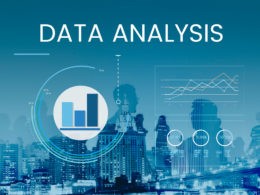In today’s dynamic marketplace, companies are constantly seeking innovative ways to gain a competitive edge and meet evolving consumer demands. One such strategy that has gained significant traction in recent years is predictive analytics in product development. By harnessing the power of data and sophisticated algorithms, companies can forecast market trends and consumer behavior with unprecedented accuracy, empowering them to make informed decisions and stay ahead of the curve.
Understanding Predictive Analytics in Product Development
Predictive analytics in product development involves the use of advanced statistical models and machine learning algorithms to analyze historical data and identify patterns, trends, and relationships. By leveraging vast amounts of data from various sources, including sales records, customer demographics, social media interactions, and market research, companies can gain valuable insights into consumer preferences, market dynamics, and emerging trends.
Forecasting Market Trends
One of the primary objectives of predictive analytics in product development is to forecast market trends accurately. By leveraging platforms such as Vypr product intelligence solutions and analyzing historical sales data and market performance metrics, companies can identify patterns and extrapolate future trends. For example, predictive analytics can help identify rising consumer preferences for specific product features, emerging market segments, or shifting demand patterns. By anticipating these trends, companies can proactively adjust their product development strategies to capitalize on new opportunities and mitigate potential risks.
Anticipating Consumer Behavior
In addition to forecasting market trends, predictive analytics also enables companies to anticipate consumer behavior more accurately. By analyzing consumer data such as purchase history, browsing behavior, and social media activity, companies can gain insights into individual preferences, buying patterns, and brand loyalty. This deep understanding of consumer behavior allows companies to tailor their product offerings, marketing campaigns, and customer experiences to better meet the needs and expectations of their target audience.
The Role of AI in Advancing Predictive Analytics
Artificial intelligence (AI) plays a pivotal role in advancing predictive analytics capabilities, offering unprecedented speed, accuracy, and scalability. AI-powered algorithms can process vast amounts of data in real-time, identify complex patterns and correlations, and generate predictive models with remarkable precision. Moreover, AI algorithms can continuously learn and adapt from new data, enhancing the accuracy and reliability of predictive analytics models over time.
Unlocking Insights for Product Innovation
By leveraging predictive analytics and AI technologies, companies can unlock valuable insights that drive product innovation and business growth. These insights enable companies to identify emerging market opportunities, optimize product features and pricing strategies, and allocate resources more effectively. By embracing data-driven decision-making processes, companies can foster a culture of innovation and agility, positioning themselves for sustained success in today’s competitive marketplace.
Conclusion
In conclusion, predictive analytics in product development offers companies a powerful tool for forecasting market trends, anticipating consumer behavior, and driving product innovation. By harnessing the power of data and AI-driven algorithms, companies can gain valuable insights that inform strategic decision-making and drive business growth. As predictive analytics continues to evolve, companies that embrace data-driven approaches will be best positioned to thrive in an increasingly competitive and dynamic business environment.












